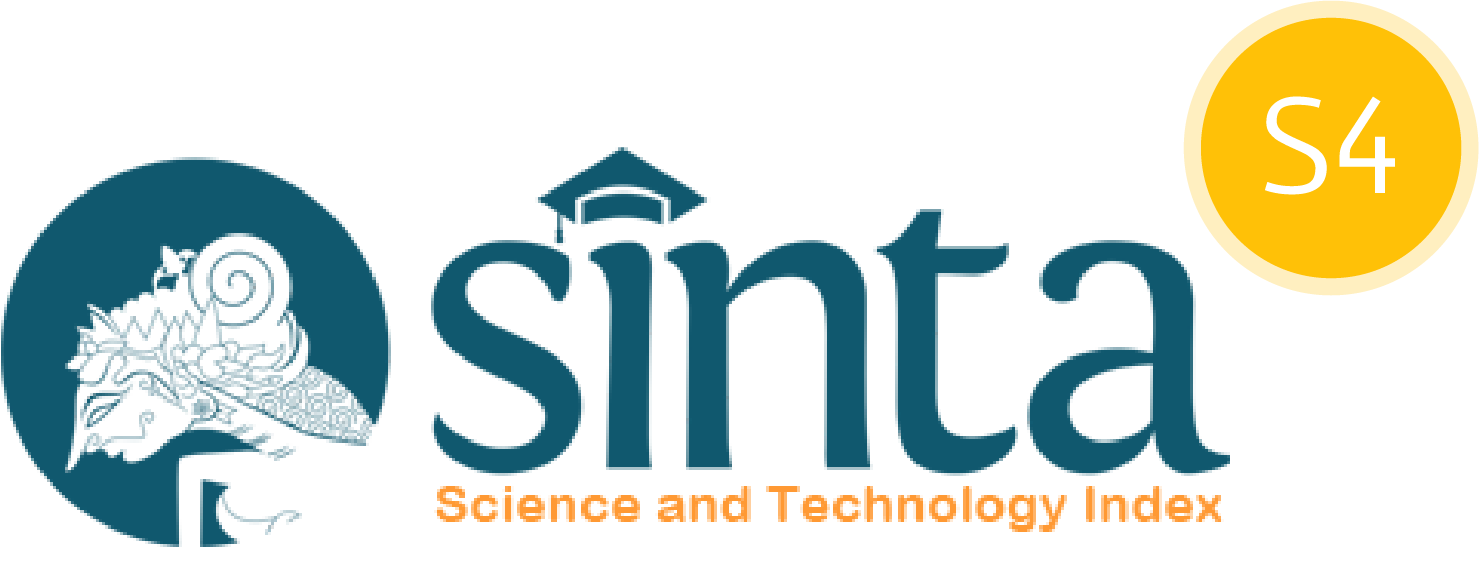Independent Scheduling System in Online Classrooms with Simple Multi-agent Temporal Networks
DOI:
https://doi.org/10.24002/konstelasi.v3i2.8276Keywords:
independent scheduling, online class, simple multi-temporal networkAbstract
Abstrak. Karena semakin populernya kelas daring, diperlukan solusi penjadwalan fleksibel yang mengakomodasi berbagai jadwal dan preferensi pengguna. Ketika fleksibilitas jadwal menjadi salah satu alasan seseorang memilih kelas daring, maka menjadi jelas bahwa algoritma penjadwalan yang baik merupakan kebutuhan dasar agar pengguna mendapatkan fleksibilitas yang mereka cari. Tujuan dari penelitian ini adalah untuk membuat dan mengembangkan algoritma penjadwalan berdasarkan jaringan temporal multi-agen untuk mengatasi batasan penjadwalan guru dan siswa baik dalam situasi kelas maupun jarak jauh. Penelitian ini menggunakan metode jaringan temporal multi-agen untuk membuat algoritma yang menawarkan solusi penjadwalan independen untuk guru dan siswa. Algoritme ini mempertimbangkan berbagai batasan, sehingga menghasilkan penjadwalan yang berhasil di dalam dan di luar situasi kelas pada umumnya. Ide yang dikemukakan menunjukkan hasil penjadwalan yang efektif, memberikan kebebasan bagi siswa dan guru. Strategi multi-agen secara efektif mengontrol berbagai batasan, memberikan solusi penjadwalan yang dapat disesuaikan untuk berbagai kebutuhan pengguna. Guru dan siswa dapat secara mandiri membentuk solusi penjadwalan dengan algoritma yang akan menyelesaikan semua kendala internal dan eksternal guru dan siswa.
Abstract. Because of the growing popularity of online classes, flexible scheduling solutions that accommodate a wide range of user schedules and preferences are required. When schedule flexibility is one reason a person chooses online classes, it becomes clear that good scheduling algorithms are a basic requirement so that users get the flexibility they seek. The goal of this research is to create and develop a scheduling algorithm based on a multi-agent temporal network to solve the scheduling restrictions of teachers and students in both classroom and distant situations. This study uses a multi-agent temporal network method to create algorithms that offer independent scheduling solutions for teachers and students. These algorithms consider a variety of restrictions, providing successful scheduling within and outside of typical classroom situations. The idea that was put forward demonstrates effective scheduling outcomes, allowing students as well as teachers freedom. The multi-agent strategy effectively controls numerous restrictions, providing customizable scheduling solutions for a wide range of user requirements. Teachers and students can independently form scheduling solutions with algorithms that will solve all internal and external constraints of teachers and students.
References
A. C. Hachey, K. M. Conway, C. Wladis, and S. Karim, “Post-secondary online learning in the U.S.: an integrative review of the literature on undergraduate student characteristics,” J Comput High Educ, vol. 34, no. 3, pp. 708–768, Dec. 2022, doi: 10.1007/s12528-022-09319-0.
G. Blau, S. Jarrell, A. Seeton, T. Young, K. Grace, and M. Hughes, “Proposing an Expanded Measure for Comparing Online/Hybrid to Face-to-face Courses,” Journal of Education and Development, vol. 2, no. 2, p. 1, Jun. 2018, doi: 10.20849/jed.v2i2.400.
S. S. Al-Gahtani, “Empirical investigation of e-learning acceptance and assimilation: A structural equation model,” Applied Computing and Informatics, vol. 12, no. 1, pp. 27–50, Jan. 2016, doi: 10.1016/j.aci.2014.09.001.
T. Daymont, G. Blau, and D. Campbell, “Deciding Between Traditional and Online Formats: Exploring the Role of Learning Advantages, Flexibility, and Compensatory Adaptation,” 2011.
C. E. Shepherd and D. U. Bolliger, “Institutional, program, and professional community: a framework for online higher education,” Educational Technology Research and Development, vol. 71, no. 3, pp. 1233–1252, Jun. 2023, doi: 10.1007/s11423-023-10214-3.
S. F. Smith, A. Gallagher, and T. Zimmerman, “Distributed Management of Flexible Times Schedules,” in Proceedings of the 6th International Joint Conference on Autonomous Agents and Multiagent Systems, in AAMAS ’07. New York, NY, USA: Association for Computing Machinery, 2007. doi: 10.1145/1329125.1329215.
F. Zhang, Y. Mei, S. Nguyen, and M. Zhang, “Multitask Multiobjective Genetic Programming for Automated Scheduling Heuristic Learning in Dynamic Flexible Job-Shop Scheduling,” IEEE Trans Cybern, vol. 53, no. 7, pp. 4473–4486, 2023, doi: 10.1109/TCYB.2022.3196887.
A. R. Morse et al., “What could we do differently next time? Australian parents’ experiences of the short-term and long-term impacts of home schooling during the COVID-19 pandemic,” BMC Public Health, vol. 22, no. 1, Dec. 2022, doi: 10.1186/s12889-022-12495-4.
M. Hausknecht and P. Stone, “Deep Recurrent Q-Learning for Partially Observable MDPs,” Jul. 2015, [Online]. Available: http://arxiv.org/abs/1507.06527
S. Bhat, J. B. Lyons, C. Shi, and X. J. Yang, “Effect of Adapting to Human Preferences on Trust in Human-Robot Teaming,” Sep. 2023, [Online]. Available: http://arxiv.org/abs/2309.05179
A. Tabrez, M. B. Luebbers, and B. Hayes, “Descriptive and Prescriptive Visual Guidance to Improve Shared Situational Awareness in Human-Robot Teaming; Descriptive and Prescriptive Visual Guidance to Improve Shared Situational Awareness in Human-Robot Teaming,” 2022. [Online]. Available: www.ifaamas.org
J. C. Boerkoel and E. H. Durfee, “Decoupling the Multiagent Disjunctive Temporal Problem.” [Online]. Available: www.aaai.org
S. Kong, J. H. Lee, and S. Li, “Multiagent Simple Temporal Problem: The Arc-Consistency Approach,” 2018. [Online]. Available: www.aaai.org
J. Cui, P. Yu, C. Fang, P. Haslum, and B. C. Williams, “Optimising Bounds in Simple Temporal Networks with Uncertainty under Dynamic Controllability Constraints.” [Online]. Available: www.aaai.org
K. Osanlou et al., “Solving Disjunctive Temporal Networks with Uncertainty under Restricted Time-Based Controllability using Tree Search and Graph Neural Networks,” Mar. 2022, [Online]. Available: http://arxiv.org/abs/2203.15030
A. Bit-Monnot, F. Leofante, L. Pulina, E. Abraham, and A. Tacchella, “SMarTplan: a Task Planner for Smart Factories,” Jun. 2018, [Online]. Available: http://arxiv.org/abs/1806.07135
J. C. Boerkoel, L. R. Planken, R. J. Wilcox, and J. A. Shah, “Distributed Algorithms for Incrementally Maintaining Multiagent Simple Temporal Networks.” [Online]. Available: www.aaai.org
G. Casanova GuillaumeCasanova, C. Lesire-Cabaniols CharlesLesire, and onerafr Cédric Pralet, “Managing Dynamic Multi-Agent Simple Temporal Network.” [Online]. Available: www.ifaamas.org











